UPSC GS 1
Vaikom Satyagraha
- News: Decks have been cleared for the Tamil Nadu government to build a memorial for social reformer Periyar E.V. Ramasamy, one of the leaders of the Vaikom Satyagraha, at Arookutty in Alappuzha.
- Overview:
-
- The Vaikom Satyagraha was a social reform movement that took place in Vaikom, part of the princely state of Travancore (now in Kottayam district, Kerala) during 1924-1925.
- It marked the beginning of temple entry movements in India.
-
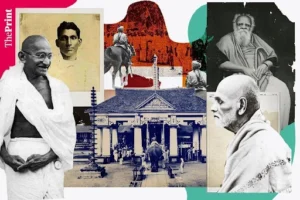
- Background:
-
- The movement centered around the Vaikom Mahadevar Temple, where Dalits were barred from entering the temple premises and even from using the surrounding road.
- During the All India Congress Committee (AICC) meeting in Kakinada in 1923, T.K. Madhavan, along with Sardar Panikkar and K.P. Kesava Menon, submitted a petition to the Travancore legislative council.
- The petition sought to secure the right for people of all castes, creeds, and communities to enter temples and worship deities.
- Leaders such as K. Kelappan toured the region, calling for equal access to the temple road, but the temple authorities refused, leading to the launch of the Satyagraha.
-
- Leadership and Support:
-
- The movement was led by key figures like K. Kelappan, T.K. Madhavan, and K.P. Kesava Menon, with many young volunteers from across Kerala joining to protest against untouchability.
- Mahatma Gandhi gave his unwavering support and visited Vaikom in 1925.
- Periyar E.V. Ramasamy played a crucial role, arriving on April 13, 1924, to lead the movement after several leaders were jailed.
- Social reformer Sree Narayana Guru also extended his support to the movement.
-
- Outcome:
-
- Despite suppression efforts by the authorities, the Satyagraha succeeded in opening the temple roads to all people, irrespective of caste.
- The protest concluded on November 23, 1925, after 604 days, having started in March 1924.
- Within three years, the Travancore government ordered the opening of temple roads across the state.
-
Read also: Israel-Lebanon War: Causes, and Global Impact | UPSC
UPSC GS 2
Pradhan Mantri Kisan Samman Nidhi Scheme
- News: The Central Government will release the 18th installment of the Pradhan Mantri Kisan Samman Nidhi (PM-KISAN) soon.
- Definition: PM Kisan is a Central Sector scheme with 100% funding from Government of India. It has become operational from 1.12.2018.
- Aim: The PM-KISAN scheme aims to provide essential income support to small and marginal farmers across India.
- Nodal Ministry: Ministry of Agriculture and Farmers Welfare
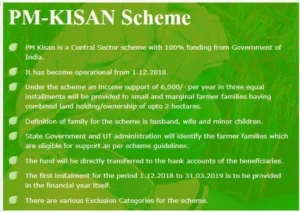
- Features:
-
- Farmers will receive ₹6,000 annually, distributed in three equal instalments of ₹2,000 each.
- The funds are directly transferred to their bank accounts.
-
- Eligibility: Eligible farmers are ones who own only up to two hectares of land.
- Importance: The 17th installment benefitted 9.25 crore farmers receiving the ₹2,000 amount.
PM Internship Scheme
- News: The Central Government has launched the Prime Minister Internship Scheme on a pilot basis.
- Definition: The PM Internship Scheme will enhance youth employability in India by offering them hands-on exposure to real-world business environments.
- Aim: The PM Internship Scheme aims to provide internship opportunities to one crore youth in the top 500 companies over the next five years.
- Budget: Rs 800 crore
- Implementation: The pilot project will be implemented through an online portal managed by the Ministry of Corporate Affairs (MCA).
- Internship Duration: One year
- Who is Eligible for the PM Internship Scheme?
-
- Candidates aged between 21 and 24 years who are not engaged in full-time employment are eligible for the one-year internship programme.
- Internships are available to those who have passed class 10 or higher.
- Individuals from families with government jobs are excluded.
- The scheme is not open to post-graduates
- A candidate who graduated from premier institutes such as IIT, IIM, or IISER, and those who have CA, or CMA qualification would not be eligible to apply for this internship.
- Anyone from a household that includes a person who earned an income of ₹8 lakh or more in 2023-24, will not be eligible.
-
- Features:
-
- The interns will be provided financial assistance of Rs 5,000 per month, with Rs 4,500 disbursed by the government and Rs 500 paid by the company from its CSR funds.
- A one-time grant of Rs 6,000 for incidentals will be disbursed by the ministry to each intern upon joining the place of internship.
- Insurance coverage will be provided to each intern under insurance schemes of the Union government, PM Jeevan Jyoti Bima Yojana, and PM Suraksha Bima Yojana. The premium amount in this regard will be offered by the government.
- Existing reservations will be applicable in selecting the candidates under the scheme.
-
- Benefits:
-
- The scheme is to provide on-job training to youth and an exposure to real-life work environment.
- The scheme will also benefit the industry by creating a pipeline of skilled, work-ready youth who can be employed post-internship both in large as well as micro, small and medium enterprises.
-
Shanghai Cooperation Organisation
- News: External Affairs Minister S Jaishankar will travel to Islamabad, Pakistan, to attend the Shanghai Cooperation Organisation (SCO) ‘Heads of Government’ (HoG) meeting soon.
- Definition: The Shanghai Cooperation Organization is a permanent intergovernmental international organization established on June 15, 2001 in Shanghai.
- Aim: To strengthen mutual trust, friendship and good-neighborliness between the Member States.
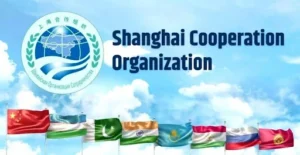
- Founding Members (‘Shanghai Five’): Its origins lie in the “Shanghai Five”, formed in 1996 and consisting of China, Russia, Kazakhstan, Kyrgyzstan and Tajikistan.
- Languages: The official languages of the SCO are Russian and Chinese.
- 10 Current Members: India, Iran, Kazakhstan, China, the Kyrgyz Republic, Pakistan, Russia, Tajikistan, Uzbekistan, Belarus
- Observer States: Afghanistan and Mongolia.
- Dialogue Partners: Azerbaijan, Armenia, Bahrain, Egypt, Cambodia, Qatar, Kuwait, Maldives, Myanmar, Nepal, United Arab Emirates, Saudi Arabia, Turkey, Sri Lanka.
- Organizational Structure:
-
- Heads of State:
- The SCO Heads of State Council is the supreme SCO body and decides major activities of the Organisation.
- It meets annually that are chaired by the head of State organising this regular meeting.
- The Council of Heads of Government (Prime Ministers):
- Second-highest council in the organization.
- Meets annually to approve the budget of the Organisation.
-
- Secretariat: Beijing
- Regional Anti-Terrorist Structure (RATS):
-
- It is an important permanent structure within the SCO.
- It assists members in the preparation and staging of counter-terrorism exercises, analyses key intelligence information coming in from the member states, and shares information on terrorist movements and drug trafficking.
-
International Energy Efficiency Hub
- News: The Union Cabinet has approved the signing of the ‘Letter of Intent,’ thus enabling India to join the ‘Energy Efficiency Hub.’
- Overview:
-
- A global platform aimed at advancing collaboration and promoting energy efficiency worldwide.
- Launched in 2020 as the successor to the International Partnership for Energy Efficiency Cooperation (IPEEC), of which India was a member.
- The Hub unites governments, international bodies, and private sector stakeholders to share knowledge, best practices, and innovative energy solutions.
-
- Member Countries:
-
- Sixteen countries have joined the Hub, including: Argentina, Australia, Brazil, Canada, China, Denmark, European Commission, France, Germany, Japan, Korea, Luxembourg, Russia, Saudi Arabia, United States, and the United Kingdom.
-
- Implementing Agency (India):
-
- In India, the Bureau of Energy Efficiency (BEE) has been appointed as the implementing agency for the Hub.
- BEE will coordinate India’s engagement in the Hub’s activities, ensuring alignment with India’s national energy efficiency goals.
-
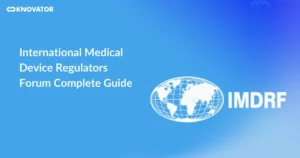
- Significance for India:
-
- India gains access to a broad network of global experts and resources, supporting its domestic energy efficiency initiatives.
- The country’s involvement strengthens global efforts to address climate change through the adoption of energy-efficient technologies and practices.
- Participation in this international platform will expedite India’s shift to a low-carbon economy and bolster energy security.
- This initiative reaffirms India’s dedication to sustainable development and its commitment to reducing greenhouse gas emissions.
-
International Medical Device Regulators Forum (IMDRF)
- News: India has become an affiliate member of International Medical Device Regulators Forum.
- Definition:
-
- Established in 2011, the IMDRF is a group of global medical device regulators.
- Its primary goal is to accelerate the adoption of internationally harmonized and converged medical device regulations.
-
- Members:
-
- The IMDRF includes national regulatory bodies from the U.S., Australia, Canada, the European Union, Japan, the United Kingdom, Brazil, Russia, China, South Korea, Singapore, and the World Health Organization (WHO).
- This membership fosters regulatory harmonization, reducing complexity for manufacturers and enhancing public health protection through collaboration and convergence of medical device regulations.
- It also promotes innovation and ensures timely access to new medical technologies.
-
- Significance for India:
-
- India will engage in IMDRF Open Sessions, which facilitate information exchange with global regulators on technical matters, discussions on evolving regulatory strategies, and the latest trends in medical device regulation.
- Through these interactions, India can provide feedback on its regulatory experiences and perspectives.
- Participation in IMDRF will enhance the Central Drugs Standard Control Organization’s (CDSCO) regulatory framework for medical devices, addressing diverse technical challenges and ensuring the protection of public health and safety.
- It will also contribute to India’s aim of gaining international recognition for its medical device regulatory system.
-
UPSC GS 3
Emergency Use Listing (EUL)
- News: The World Health Organization (WHO) has listed the first Mpox in vitro diagnostic under its Emergency Use Listing procedure.
- Definition: The WHO Emergency Use Listing (EUL) is a risk-based procedure for assessing unlicensed vaccines, therapeutics, and in vitro diagnostics during public health emergencies.
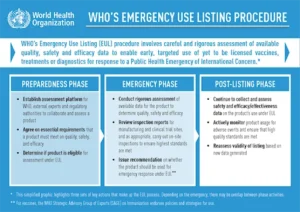
- Eligible Products Must Meet The Following Criteria:
-
- The disease is serious, potentially causing an outbreak, epidemic, or pandemic.
- No licensed products exist, or current ones are ineffective for certain populations.
- The product is manufactured under Good Manufacturing Practices (GMP) or a Quality Management System (QMS).
- The applicant commits to completing product development and applying for WHO prequalification once licensed.
-
Pygmy Hog
- News: Nine captive-bred pygmy hogs have been released in Assam national park.
- Overview:
-
- The Pygmy Hog is the smallest and rarest species of wild pig globally.
- Remarkably, it is one of the few mammals that constructs its own nest, complete with a roof.
- It serves as an indicator species, with its presence signaling the health of its primary habitat, the tall and wet grasslands.
-
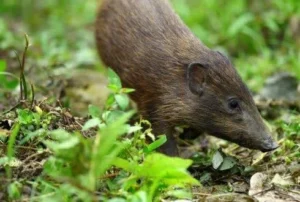
- Habitat:
-
- Prefers undisturbed patches of grasslands dominated by early succession riverine communities.
- These areas are typically composed of dense tall grasses, interspersed with various herbs, shrubs, and young trees.
- Currently, a viable population exists in the wild only within the Manas Tiger Reserve, Assam.
-
- Conservation Status:
-
- IUCN Red List: Classified as Critically Endangered.
- Wildlife Protection Act, 1972: Listed under Schedule I, offering the highest level of protection.
-
Read also: University Ranking Framework: A Comprehensive Guide | UPSC
Charon
- News: Scientists have detected the gases carbon dioxide and hydrogen peroxide on Pluto’s largest moon, ‘Charon’, which could help understand how icy bodies originated and evolved in the outer Solar System.
- Overview:
-
- Charon is the largest of Pluto’s five moons, with a size that is nearly half that of Pluto.
- Discovered on June 22, 1978, by astronomers James W. Christy and Robert S. Harrington at the U.S. Naval Observatory station in Flagstaff, Arizona.
- The moon was named after Charon, the mythological ferryman who carried souls to the underworld of Hades in Greek mythology, corresponding to the Roman god Pluto.
-

- Physical Characteristics:
-
- Charon has a diameter of 754 miles (1,214 kilometers), while Pluto spans about 1,400 miles.
- Its mass is over one-tenth that of Pluto, making it large and massive enough for the pair to be referred to as a “double dwarf planet system” in some contexts.
- The two bodies are separated by a distance of 12,200 miles (19,640 km).
-
- Orbital Properties:
-
- Charon and Pluto exhibit mutual tidal locking, meaning the same side of each body always faces the other.
- Charon’s rotation period is synchronized with its orbital period, causing it to always show the same hemisphere to Pluto.
- Charon completes one orbit around Pluto in 6.4 Earth days.
-
